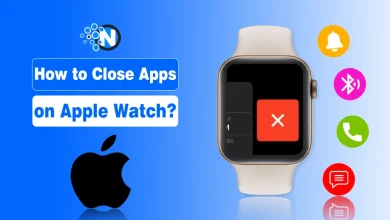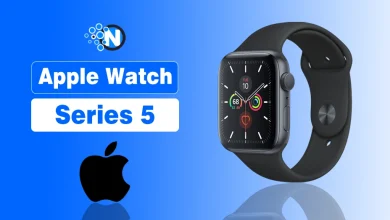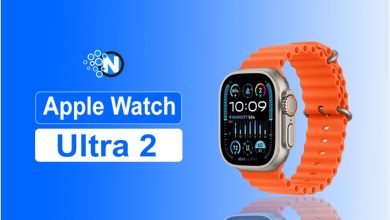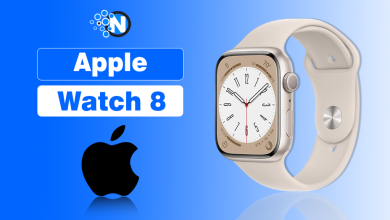
How enjoyable the user finds their phone often depends on how smoothly the operating system works. As soon as you’re on your phone, sampling popular apps, scrolling through social media or just unlocking it, those little seconds can make a real difference. Since Android 14 and iOS 17 are out, many are interested: which one truly runs more quickly and smoothly?
In this blog post, I will compare both systems in real-world situations, like performance, touch response, multitasking, and battery use, to help you decide which OS delivers a smoother ride.
If you’re trying to figure out which gives the better everyday experience, keep reading!
In this blog post, I will compare Android 14 & iOS 17 to help you understand which is smoother.
Let’s start!
Android 14 and iOS 17 – An Overview
Android 14 and iOS 17 represent the latest advancements in mobile operating systems, each bringing unique features and improvements tailored to their respective ecosystems.
Android 14

Android 14 is the fourteenth major release of Google’s mobile operating system, launched in October 2023 alongside the Google Pixel 8 series, focuses on customization and AI-driven enhancements, offering users greater control over their device experience. It adds a new way to customize the lock screen, better battery management and updates every quarter to add more improvements.
iOS 17

Apple released iOS 17, the 17th release of its mobile operating system, in September 2023 for mobile devices. It follows the company’s dedication to making communication and use easy. Live Voicemail now provides real-time transcription, FaceTime has some extra features and StandBy Mode changes the iPhone into a smart display while it’s connected to a power source.
Android 14 vs. iOS 17 – Detailed Comparison

Performance and Responsiveness
A smooth experience starts with how well the system handles everyday tasks.
App Launch Speeds and System Lag
One of the easiest ways to spot a smooth OS is how fast it opens apps. On Android 14, especially on Pixel and newer Samsung models, app launch speeds are quick and reliable. But iOS 17 continues to edge ahead, with most apps opening just a bit faster and feeling more consistent. iPhones rarely show lag, even during heavy use.
Frame Rate Stability and Scrolling Fluidity
Frame drops and stuttering can ruin the feel of a modern phone. Android 14 has made solid improvements, especially with 120Hz displays, but some models still show minor hiccups when scrolling fast or switching between screens. iOS 17, on the other hand, keeps things buttery-smooth across the board. Scrolling, swiping, and animations feel tightly controlled, which adds to the sense of polish. Many user reviews in online stores like The Loop have also pointed out how iOS continues to feel more refined, especially during transitions.
Both systems are strong performers, but when it comes to split-second reactions and a consistently smooth feel, iOS 17 still has a slight upper hand. That’s especially true on older hardware.
User Interface Experience
How smooth an OS feels often comes down to how well it handles the little things, like animations, transitions, and how quickly the screen responds to your touch.
Animations and Transitions
Android 14 brings some refined animations, especially on clean interfaces like Google’s Pixel UI. Movements between screens feel more natural than in past versions, and Material You continues to add style without slowing things down. Still, depending on the phone brand, transitions can sometimes feel inconsistent.
iOS 17 keeps its edge here. Transitions between apps, menus, and settings are not only quick but feel fluid and intentional. Everything flows in a way that gives the OS a more polished, finished feel.
Touch Input and Gesture Response
Both systems respond quickly to taps and swipes, but iOS 17 still leads in terms of accuracy and speed. Gestures feel tighter and more predictable, while Android 14 occasionally has slight delays, especially on mid-range devices.
Overall, iOS 17 delivers a more stable and unified touch experience.
Multitasking and App Switching
When switching between tasks or using more than one app at a time, smoothness plays a big role in keeping things fast and frustration-free.
Background App Management
Android 14 offers more freedom in multitasking, especially on high-end devices. You can leave several apps running in the background without much slowdown, and many phones now come with plenty of RAM to handle it. That said, background app handling can vary by brand. Some Android devices are more aggressive in closing apps to save battery.
iOS 17 is more controlled. It limits background processes, but does so in a way that keeps the system stable and responsive. Apps often reload less often, and the switching process feels quicker.
Split Screen and Picture-in-Picture Performance
Android 14 allows true split-screen use on many devices, which is great for multitasking. Picture-in-picture also works smoothly. iOS 17 supports picture-in-picture on most apps but still doesn’t allow split screen on iPhones, limiting multitasking flexibility.
Device Optimization and Hardware Synergy
How smooth an OS feels is also about how well it works with the hardware it runs on. This is where Android 14 and iOS 17 take very different approaches.
Apple’s Control Over Hardware and Software
Apple builds both the iPhone’s hardware and iOS 17, which means the system is tuned specifically for each device. This tight control helps apps run faster, animations stay smooth, and battery use stay steady. Even older iPhones handle iOS 17 well, thanks to this deep optimization.
Android’s Flexibility Across Devices
Android 14 has to support many brands and models, from budget phones to flagship devices. While this gives users more choice, it can also lead to small performance issues on certain models. Some brands like Google and Samsung optimize well, but others may lag behind.
In short, iOS 17 benefits from a tighter setup, while Android 14 offers broader flexibility with mixed results.
Battery and Thermal Management Impact on Smoothness
How an OS handles battery use and heat can affect how smooth your phone feels. That’s especially evident during long sessions or heavy use.
Throttling and Heat Handling
Android 14 phones, depending on the brand, may throttle performance when the device gets too hot. This helps protect the hardware, but it can cause slowdowns or lag during gaming or multitasking. Newer Android devices do a better job at managing heat, but the experience still varies.
iOS 17, thanks to Apple’s control over both hardware and software, manages heat more effectively. Performance stays steady for longer, and even when the phone warms up, most users won’t notice major slowdowns.
Battery Optimization Techniques
Both systems use smart features to extend battery life, like limiting background tasks. But iOS 17 tends to apply these changes without affecting responsiveness, while some Android 14 devices might reduce performance to save power.
Overall, iOS handles battery and heat more smoothly across the board.
Updates and Long-Term Smoothness
An OS might feel fast today, but how well it holds up over time can make a big difference in your daily experience.
System Updates Over Time
Apple leads the way in long-term software updates. iPhones often get iOS updates for five or more years, and those updates are released at the same time for all supported models. iOS 17 runs well even on older devices like the iPhone 11, keeping things smooth with each new release.
Android 14 is getting better in this area. Google’s Pixel phones now promise several years of updates, and Samsung has stepped up too. However, many Android devices still get updates late, or not at all, depending on the manufacturer.
Support for Older Devices
Older iPhones usually stay smooth longer thanks to consistent updates and tight optimization. In contrast, older Android phones may slow down faster if updates stop coming or if the hardware struggles with newer features.
Which OS Feels Smoother?
iOS 17 is still smoother in general than Android 14. This is due to its sharp animations, quick reactions and smooth link between hardware and software. To be clear, Android 14 has stepped up nicely, especially when used on Pixel and Samsung’s new flagship devices. Androids are a better fit for users who need to work across several tasks at once. But if you prefer a system that performs just as well day-to-day and in the future, iOS 17 is your top choice. In the end, it comes down to what matters more to you: customization or consistency.




